#Bess Meredyth
Explore tagged Tumblr posts
Text
13 luglio … ricordiamo …
13 luglio … ricordiamo … #semprevivineiricordi #nomidaricordare #personaggiimportanti #perfettamentechic
2022: Charlotte Valandrey, pseudonimo di Anne-Charlotte Pascal, attrice, cantante e scrittrice francese. Iniziò la sua carriera di attrice negli anni ottanta. Ottenne il suo primo ruolo a 16 anni, nel 1985, nel film A Parigi con amore. Dal 1991 al 2000 prese parte alla serie televisiva Il commissario Cordier. Nel 1999 si sposò con Oscar, da cui ebbe la figlia Tara; si separò nel 2002. Nel 2005…

View On WordPress
#13 luglio#13 luglio morti#Alla Nazimova#Anne-Charlotte Pascal#Bess Meredyth#Beverly Roberts#Big Jimmy#Charlotte Valandrey#Claudio Cassinelli#Corinne Griffith#Cory Allan Michael Monteith#Cory Monteith#Domiziano Arcangeli#Enzo Maggio#Franco Pastorino#Frida Kahlo#Girolamo Di Stolfo#Helen Elizabeth MacGlashen#Jessie Millward#John Alexander#John Bryant#Lois Darlington Dowlin#Lois Moran#Magdalena Carmen Frida Kahlo y Calderón#Marem-Ides Adelaida Jacovlevna Leventon#Marthe Lagrange#Marthe Vinot#nata Corinne Mae Griffith#Pina Renzi#Red Buttons
0 notes
Photo
A Woman of Affairs (Clarence Brown, 1928)
Cast: Greta Garbo, John Gilbert, Douglas Fairbanks Jr., Johnny Mack Brown, Lewis Stone, Dorothy Sebastian, Hobart Bosworth. Screenplay: Bess Meredyth, Marian Ainslee (titles), Ruth Cummings (titles), based on a novel and play by Michael Arlen. Cinematography: William H. Daniels. Art direction: Cedric Gibbons. Film editing: Hugh Wynn. Costumes: Adrian.




Greta Garbo, A Woman of Affairs, 1928
301 notes
·
View notes
Text
THE H/H APPENDIX VOL. II
THE KINGDOM OF THE RIVERLANDS
HOUSE TULLY OF RIVERRUN:
EDMURE TULLY, King of the Riverlands and the Trident, son of Lord Hoster Tully, Lord of Riverrun, and his wife, Lady Minisa, of House Whent
His wife, QUEEN ROSLIN, of House Frey
His son, PRINCE HOSTER
His daughter, PRINCESS CATELYN
His wards:
DELLA, of House Frey, daughter of Benfrey and Jyanna Frey
OSMUND, of House Frey, daughter of Benfrey and Jyanna Frey
HOUSE FREY OF THE CROSSING:
PERWYN FREY, Lord of the Twins, son of Lord Walder Frey, and his wife, Lady Bethany, of House Rosby
His wife, LADY WALDA, of House Frey
His daughter, ARWYN
His son, BENFREY
His sisters:
PERIANNE, LYTHENE, JEYNE, MORYA, TYTA, MELLARA, and SHIREI
His brothers:
LUCEON, MELWYS, WILLAMEN, OLYVAR, COLMAR, WALTYR, and ELMAR
His nieces:
MAEGELLE, MARIANNE, WALDA, PERRA, WHITE WALDA, KYRA, ZIA, JEYNE, RYELLA, HOSTELLA, ELYANA, ALYX, AMEREI, FAT WALDA, MARISSA, CYNTHEA, SERRA, SARRA, CERSEI, WALDA, EMBERLEI, LEANA, MERIANNE, and DELLA
His nephews:
WALDER, PATREK, RED WALDER, WILLEM, ROBERT, JONOS, WALDER, ZACHERY, WALDER, ANDROW, ALYN, ALESANDER, BRADAMAR, SANDOR, ROBERT, MALWYN, JAIME, TYWIN, BIG WALDER, DICKON, MATHIS, HOSTER, ROBERT, WALDER, JON, and DONNEL
HOUSE PAEGE OF SNAKE’S DEN:
HALMON PAGE, Knight of Snake’s Den
His wife, LADY MURIEL, of House Grey
His son, GARRETT
His son, MALCOLM
His daughter, JANNA
His daughter, PIPPA
His sister, SALLEI, widow of Ser Jammos, of House Frey
His sister, SYLWA, widow of Ser Whalen, of House Frey
His nephews:
WALDER, DICKON, MATHIS, and HOSTER
His nieces:
MERIANNE and DANELLE
His brother, DAMON
His goodsister, MELLARA, widow of Ser Robert Paege
HOUSE BLACKWOOD OF RAVENTREE HALL:
BRYNDEN BLACKWOOD, Lord of Raventree Hall
His wife, LADY CATELYN, of House Bracken
His son, ROBB
His brothers:
LUCAS, HOSTER, EDMUND, and ALYN
His sister, BETHANY
His mother, LADY ELLA, of House Butterwell
HOUSE BRACKEN OF STONE HEDGE:
BARBARA BRACKEN, Lady of Stone Hedge
Her husband, SER LUCAS, of House Blackwood
Her daughter, DONELLA
Her sisters:
JAYNE, CATELYN, BESS, and ALYSANNE
Her mother, LADY LUCINDA, of House Smallwood
Her cousin, SER HENDRY
His wife, TYTA, of House Frey
Her nephew, DONNEL
HOUSE DARRY OF CASTLE DARRY:
MARIYA DARRY, Lady of Castle Darry, widow of Ser Merrett Frey
Her daughters, AMEREI, FAT WALDA, and MARISSA
Her sister, JEYNE, widow of Ser Cleos Frey
Her nephews, TYWIN and WILLEM
HOUSE MALLISTER OF SEAGARD:
JEFFORY MALLISTER, Lord of Seagard, son of Lord Jason Mallister, and his wife, Lady Meredyth, of House Shawney
His wife, LADY BESS, of House Bracken
His sister, ALICENT
His brother, WILLEM
His mother, LADY MEREDYTH, of House Shawney
HOUSE MOOTON OF MAIDENPOOL:
ELEANOR MOOTON, Lady of Maidenpool, son of Lord William Mooton, and his wife, Lady Perra, of House Piper
Her husband, LORD DICKON, of House Tarly
Her mother, LADY PERRA, of House Piper
Her sister, MARJORIE
HOUSE PIPER OF PINKMAIDEN:
MARQ PIPER, Lord of Pinkmaiden, son of Lord Clement Piper, and his wife, Lady Melissa, of House Bracken
His wife, LADY ALICENT, of House Mallister
His daughter, CLEMENTINE
His brother, LEWYS
His mother, LADY MELISSA
HOUSE SMALLWOOD OF ACORN HALL:
CARELLEN SMALLWOOD, Lady of Acorn Hall, daughter of Lord Theomar Smallwood, and his wife, Lady Ravella, of House Swann
Her husband, SER LEWYS, of House Piper
Her mother, LADY RAVELLA, of House Swann
HOUSE VANCE OF ATRANTA:
RONALD VANCE, Lord of Atranta, son of Lord Norbert Vance, and his wife, Lady Dorothea, of House Perryn
His wife, LADY ROBYN, of House Hawick
His son, NORBERT
His daughter, ALYSSA
His daughter, MARA
His brother, SER KIRTH
His goodsister, ALYX
His nephew, HUGO
His nephew, ELLERY
His brother, JON
HOUSE VANCE OF WAYFARER’S REST:
LIANE VANCE, Lady of Wayfarer’s Rest, daughter of Lord Karyl Vance, and his wife, Lady Araminta, of House Terrick
Her mother, LADY ARAMINTA
Her sister, RHIALTA
Her sister, EMPHYRIA
26 notes
·
View notes
Photo
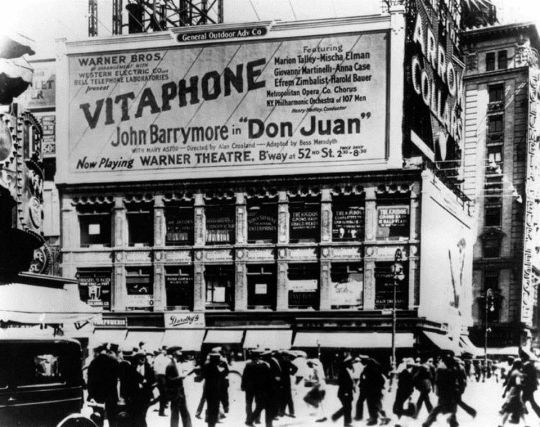

Very early sound, for movies.
'Don Juan is a 1926 American romantic adventure film directed by Alan Crosland. It is the first feature-length film to utilize the Vitaphone sound-on-disc sound system with a synchronized musical score and sound effects, though it has no spoken dialogue. The film is inspired by Lord Byron's 1821 epic poem of the same name. The screenplay was written by Bess Meredyth with intertitles by Maude Fulton and Walter Anthony. Don Juan stars John Barrymore as the hand-kissing womanizer. The film has the most kisses in film history, with Barrymore kissing (all together) Mary Astor and Estelle Taylor 127 times.'
2 notes
·
View notes
Photo

“When Women Wrote Hollywood” Panel at Denver Pop Culture Con [Video] (40 minutes 48 seconds)
On Saturday June 1, 2019 from 12:30 pm to 1:20 pm I had the great joy of hosting a panel at the Denver Popular Culture Con celebrating the work of 4 of the alumni of our Stephens College MFA in TV and Screenwriting – Sydney Haven, Amy Banks, Mikayla Daniels, Kelley Zinge – who themselves were celebrating the female screenwriters they each researched and wrote about in our book “When Women Wrote Hollywood”.
The audience enjoyed the comfortable style of our panel along with the stories they had to tell of women who ran their own studios, wrote/produced/directed and often starred in their own films which all came under the banner of the Con’s “Reel Heroes” track. Women such as Bess Meredyth, Fredericka Sagor Mass, Jane Murfin, and Lillian Hellman are heroes to the many female artists doing that same work today against the ridiculous comments about whether or not studios can risk loaning so much production monies to ‘untried’ talents. We need to tell these stories over and over so that those comments can be relegated to the historical trash heap on which they belong.
So enjoy listening to these newly-minted scholars and remember their names – along with the names of the women they honored with their writing. And many thanks to Sydney Haven for suggesting we submit a panel proposal! It was a great weekend! McFarland & Company, Inc., Publishers Stephens College Stephens College MFA in TV and Screenwriting Semester in LA (Columbia College Chicago)
#books#screenwriter#screenwriting#history#movies#film#women#education#academic#Rosanne Welch#PhD#speaking#presentation#writer#writing#book#essay#Cal Poly pomona#Stephens College#Stephens College MFA in TV and Screenwriting
1 note
·
View note
Photo

Estelle Taylor and John Barrymore in Don Juan (Alan Crosland, 1926) Cast: John Barrymore, Mary Astor, Estelle Taylor, Warner Oland, Montagu Love, Willard Louis, Myrna Loy, Hedda Hopper, Nigel De Brulier, Jane Winton, John Roche, Gustav von Seyffertitz. Screenplay: Bess Meredyth; Titles: Walter Anthony, Maude Fulton. Cinematography: Byron Haskin. Art direction: Ben Carré. Film editing: Harold McCord. Music: William Axt, David Mendoza. Alan Crosland's silly action movie Don Juan has two things in its favor. One of them is historical: It was the first film with a synchronized sound track, though it's all music and no dialogue, which would have to wait a year for Crosland's The Jazz Singer. The score is played by no less than the New York Philharmonic. The other is the cast, starting with John Barrymore, first hamming it up in a death scene as Don Juan's father, and then doing some Douglas Fairbanks-style leaping about and sword-fighting as the great seducer. But the female cast is even more interesting, with Mary Astor teamed again with her Beau Brummel (Harry Beaumont, 1924) co-star and former lover Barrymore, as well as some actresses who went on to different sorts of fame. Before she became Hollywood's favorite wife and/or mother, Myrna Loy was often cast as a vamp or a sinister type; here she slinks around as Lucrezia Borgia's lady-in-waiting, spying and tattling and stealing scenes from Estelle Taylor's Lucrezia. And before she became one of Hollywood's two most feared purveyors of gossip -- the other being Louella Parsons -- Hedda Hopper had a long career as a supporting actress; here she's the Marchesia Rinaldo, who kills herself when her husband discovers her affair with Don Juan. As for the rest of the movie, it's predictably junky, "explaining" Don Juan's treatment of women as a product of witnessing as a child his father being murdered by a cast-off lover. This psychological trauma is, I guess, supposed to make us believe that Juan has been cured of his hypersexuality by the love of a pure woman, Astor's Adriana della Varnese, with whom he literally rides off into the sunset at the end of the film.
1 note
·
View note
Text
A TALE OF ROMANCE AND DERRING-DO (With Synchronized Music and Sound Effects): A Study of Don Juan (1926)
A TALE OF ROMANCE AND DERRING-DO (With Synchronized Music and Sound Effects): A Study of Don Juan (1926)
by Robert Short, special guest writer. Promotional Poster for Don Juan DON JUAN (1926) Directed by Alan Crosland. Starring John Barrymore, Mary Astor, Warner Oland, Estelle Taylor, Montagu Love, Helene Costello, Gibson Gowland, Willard Louis. Screenplay by Bess Meredyth. Intertitles by Walter Anthony and Maude Fulton (both uncredited). Silent with Vitaphone musical score and sound…

View On WordPress
0 notes
Photo

Academy Award–winning director Michael Curtiz (1886–1962)—whose best-known films include Casablanca (1942), Yankee Doodle Dandy (1942), Mildred Pierce (1945) and White Christmas (1954)—was in many ways the anti-auteur. During his unprecedented twenty-seven year tenure at Warner Bros., he directed swashbuckling adventures, westerns, musicals, war epics, romances, historical dramas, horror films, tearjerkers, melodramas, comedies, and film noir masterpieces. The director’s staggering output of 180 films surpasses that of the legendary John Ford and exceeds the combined total of films directed by George Cukor, Victor Fleming, and Howard Hawks. In the first biography of this colorful, instinctual artist, Alan K. Rode illuminates the life and work of one of the film industry’s most complex figures. He begins by exploring the director’s early life and career in his native Hungary, revealing how Curtiz shaped the earliest days of silent cinema in Europe as he acted in, produced, and directed scores of films before immigrating to the United States in 1926. In Hollywood, Curtiz earned a reputation for his explosive tantrums, his difficulty communicating in English, and his disregard for the well-being of others. However, few directors elicited more memorable portrayals from their casts, and ten different actors delivered Oscar-nominated performances under his direction. In addition to his study of the director’s remarkable legacy, Rode investigates Curtiz’s dramatic personal life, discussing his enduring creative partnership with his wife, screenwriter Bess Meredyth, as well as his numerous affairs and children born of his extramarital relationships. This meticulously researched biography provides a nuanced understanding of one of the most talented filmmakers of Hollywood’s golden age.
Writer and film scholar Alan K. Rode is the author of Charles McGraw: Film Noir Tough Guy. He is the host and producer of the Arthur Lyons Film Noir Festival in Palm Springs, California, and director-treasurer of the Film Noir Foundation.
Michael Curtiz is the best director most people have never heard of. Yet until now nobody has taken up the case for Curtiz in a soup-to-nuts biography. The good news is that Alan Rode’s massive book is exhaustively researched, well written and frequently witty. [Curtiz] amassed a body of work without parallel at a great movie studio [Warner Bros.]. His films are his best advocate of that, but Alan Rode’s book is a close second. — Wall Street Journal
A superbly researched, highly compelling account of one of cinema’s most gifted and underrated directors, Rode provides a vivid description of Curtiz’s personality and working methods. It is difficult if not impossible to imagine a more complete account of his life. — Steven C. Smith, author of A Heart at Fire’s Center: The Life and Music of Bernard Herrmann
Alan K. Rode’s intensely personal biography provides the reader with a complete, well-researched, comprehensive, and critical career study of a brilliant yet complicated artist. A wonderful read and an accurate source for future reference, Michael Curtiz: A Life in Film is thoroughly satisfying, highly intelligent, and a delicious, rich dessert for any serious lover of film and film history. Indulge. — Stephen Michael Shearer, author of Patricia Neal: An Unquiet Life Finally
In Alan K. Rode’s deeply researched and compelling biography, Michael Curtiz gets long overdue recognition as one of the cinema’s greatest storytellers. Casablanca is merely the most renowned of the man’s many masterpieces, and Rode does the director justice by leaving no stone unturned in his examination of Curtiz’s life and career. This book is a significant addition, and at times a valuable corrective, to existing scholarship on Hollywood, the studio system, and the auteur theory. Bravo! — Eddie Muller, author and Turner Classic Movies host
Daily inspiration. Discover more photos at http://justforbooks.tumblr.com
7 notes
·
View notes
Photo

New Episode of NOIR TALK
Michael Curtiz - A Life in Film, with Alan K. Rode
Film Noir Foundation charter director and treasurer Alan K. Rode joins NOIR TALK producer and host Haggai Elitzur to discuss his new biography of Michael Curtiz, one of classic Hollywood's greatest directors. They start with Curtiz's early life and career in Europe, his first years in Hollywood and his wife and close collaborator Bess Meredyth. The pair move onto Curtiz’ Hollywood years—his breakthrough success with Captain Blood and other hits with Errol Flynn, as well as the peak of Curtiz’ career, directing Yankee Doodle Dandy and Casablanca.
Curtiz' major films noirs are also covered: Mildred Pierce, The Unsuspected, The Sea Wolf which has been recently restored, and his post-war masterpiece, The Breaking Point.
The discussion wraps up with a few titles from late in Curtiz's career and a discussion of why he’s not as well-known today as some of his contemporaries.
You can listen either on SoundCloud or on iTunes.
Photo: James Cagney and Michael Curtiz on the set of Angels with Dirty Faces
21 notes
·
View notes
Text
13 luglio … ricordiamo …
13 luglio … ricordiamo … #semprevivineiricordi #nomidaricordare #personaggiimportanti #perfettamentechic #felicementechic #lynda
2019: Richard Carter, Vale Richard Carter, era un attore e artista di doppiaggio australiano apparso in diverse serie televisive e film. (n. 1953) 2018: Ruggero Cara, attore italiano. (n. 1948) 2015: Girolamo Di Stolfo, noto anche con lo pseudonimo di Big Jimmy, attore, personaggio televisivo e pugile italiano. (n. 1967) 2013: Cory Monteith, Cory Allan Michael Monteith, attore e cantante…
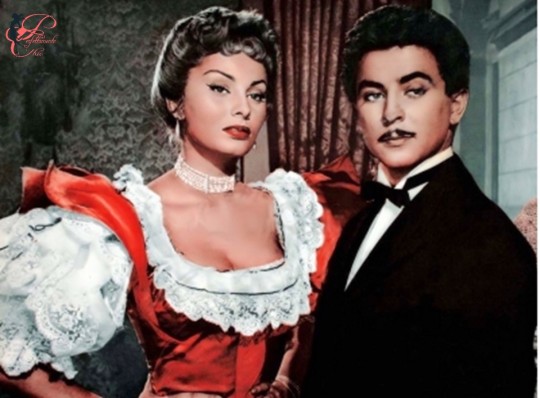
View On WordPress
#13 luglio#13 luglio morti#Alla Nazimova#Bess Meredyth#Beverly Roberts#Big Jimmy#Claudio Cassinelli#Corinne Griffith#Cory Allan Michael Monteith#Cory Monteith#Enzo Maggio#Franco Pastorino#Frida Kahlo#Girolamo Di Stolfo#Helen Elizabeth MacGlashen#Jessie Millward#John Alexander#John Bryant#Lois Darlington Dowlin#Lois Moran#Magdalena Carmen Frida Kahlo y Calderón#Marem-Ides Adelaida Jacovlevna Leventon#nata Corinne Mae Griffith#Pina Renzi#Red Buttons#Richard Carter#Ruggero Cara#Sage Moonblood Stallone#Sage Stallone#Vincenzo Maggio
1 note
·
View note
Text
Thursday, April 3, 1930|Honoring movies released from August 1, 1928 - July 31, 1929
OUTSTANDING PICTURE
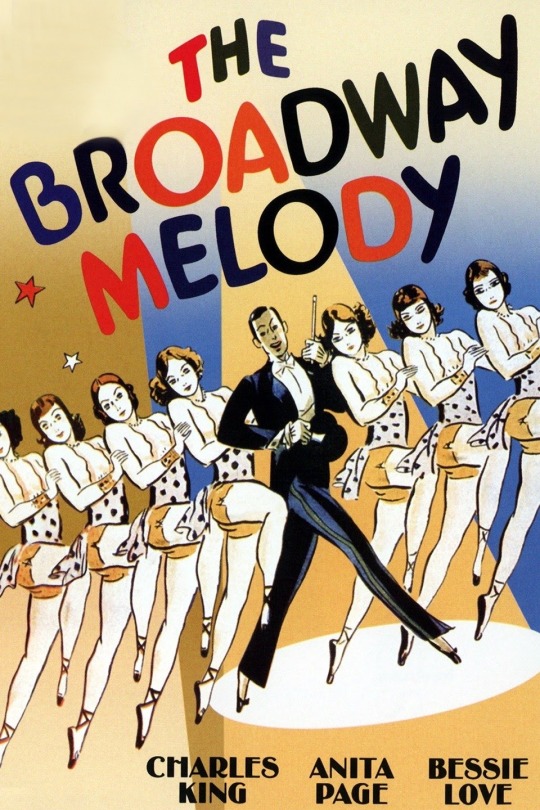
WINNER
THE BROADWAY MELODY
Metro-Goldwyn-Mayer
NOMINEES
ALIBI
Feature Productions
IN OLD ARIZONA
Fox
HOLLYWOOD REVUE
Metro-Goldwyn-Mayer
THE PATRIOT
Paramount Famous Lasky
DIRECTING

WINNER
THE DIVINE LADY
Frank Lloyd
NOMINEES
MADAME X
Lionel Barrymore
THE BROADWAY MELODY
Harry Beaumont
IN OLD ARIZONA
Irving Cummings
DRAG
Frank Lloyd
WEARY RIVER
Frank Lloyd
THE PATRIOT
Ernst Lubitsch
CINEMATOGRAPHY
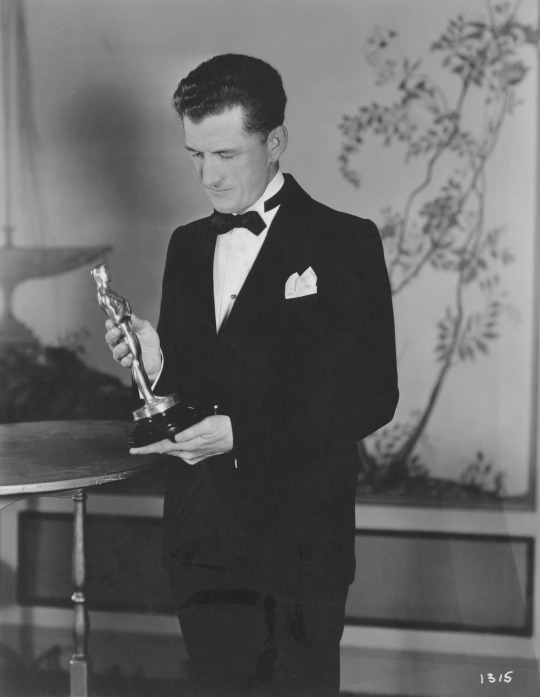
WINNER
WHITE SHADOWS IN THE SOUTH SEAS
Clyde De Vinna
NOMINEES
OUR DANCING DAUGHTERS
George Barnes
IN OLD ARIZONA
Arthur Edeson
FOUR DEVILS
Ernest Palmer
STREET ANGEL
Ernest Palmer
THE DIVINE LADY
John Seitz
ACTOR
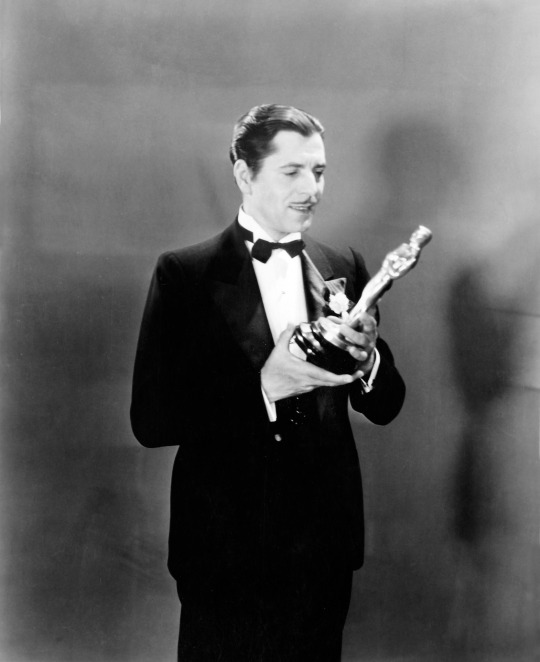
WINNER
WARNER BAXTER
In Old Arizona
NOMINEES
GEORGE BANCROFT
Thunderbolt
CHESTER MORRIS
Alibi
PAUL MUNI
The Valiant
LEWIS STONE
The Patriot
ACTRESS

WINNER
MARY PICKFORD
Coquette
NOMINEES
RUTH CHATTERTON
Madame X
BETTY COMPSON
The Barker
JEANNE EAGELS
The Letter
CORINNE GRIFFITH
The Divine Lady
BESSIE LOVE
The Broadway Melody
ART DIRECTION
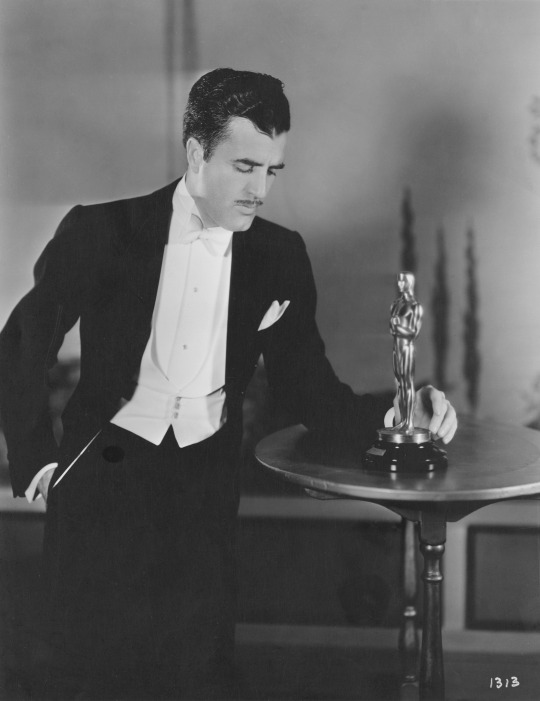
WINNER
THE BRIDGE OF SAN LUIS REY
Cedric Gibbons
NOMINEES
THE PATRIOT
Hans Dreier
DYNAMITE
Mitchell Leisen
ALIBI
William Cameron Menzies
THE AWAKENING
William Cameron Menzies
STREET ANGEL
Harry Oliver
WRITING
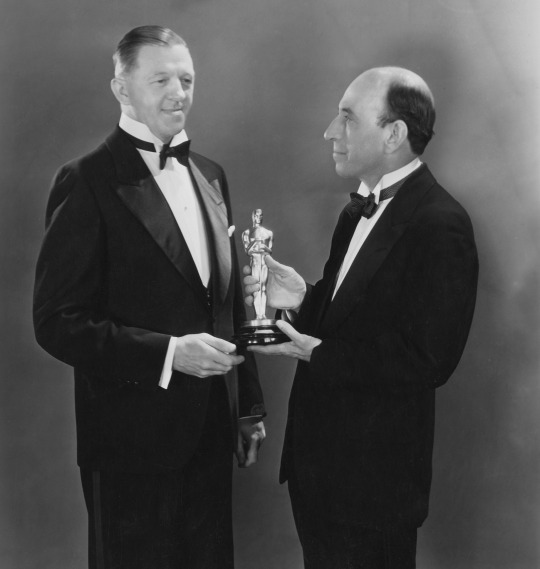
WINNER
THE PATRIOT
Hans Kraly
NOMINEES
THE VALIANT
Tom Barry
IN OLD ARIZONA
Tom Barry
THE LEATHERNECK
Elliott Clawson
SAL OF SINGAPORE
Elliott Clawson
SKYSCRAPER
Elliott Clawson
THE COP
Elliott Clawson
THE LAST OF MRS. CHEYNEY
Hans Kraly
OUR DANCING DAUGHTERS
Josephine Lovett
WONDER OF WOMEN
Bess Meredyth
A WOMAN OF AFFAIRS
Bess Meredyth
0 notes
Text
Out of the Past: Noir City: Chicago is Back for 10th Year
This year's Noir City: Chicago seemingly borrows a title from classic of the genre itself: Out of the Past.
For the 10th anniversary of the Chicago edition of their traveling festival, which runs August 17 to 23 at the Music Box Theatre, 3733 N. Southport, programmers Eddie Muller and Alan K. Rode have taken a page from the golden age of Hollywood. Each day of the weeklong event pairs two A and B titles for a double bill of maximum noir. (The term “B movie” of course was used to define films programmed as the lesser half of a double feature.)
“This year’s programming concept does seem really simple,” said Muller, founder and president of the San Francisco-based Film Noir Foundation, which presents the festival, with sponsorship from Turner Classic Movies’ weekly “Noir Alley” showcase (hosted by Muller, a.k.a. “The Czar of Noir” himself). He also will introduce films during the festival’s opening weekend at the Music Box. “The irony is that we’re doing what they were doing 70 years ago.”
Earlier this year, for the San Francisco edition of Noir City, Muller used the same concept, and “it was kind of revelatory,” he said. “It really focused my intros, and by programming this kind of double bills, we could address things that were different from year to year. By 1947-’48, noir was in full flower. It really wasn’t a movement until then. As it went forward, it changed and morphed into something different. It’s also a great way of balancing a well-known film with something more obscure that you couldn’t fit in otherwise.”
Rode, Muller’s partner in noirdom (and an FNF director-treasurer), reports the concept worked really well when they reprised it in Hollywood in April. “We had to cheat a bit to program ‘The Scarlet Hour’ (pictured below) since it’s a 1956 B-release paired with a 1952 A-title ‘The Turning Point.’” But they couldn’t resist because it’s a rarely seen noir by Hollywood heavyweight Michael Curtiz (the subject of Rode’s latest book, Michael Curtiz: A Life in Film, as well as a current retrospective at the Music Box).
“It’s exciting to show ‘The Scarlet Hour’ because it’s a real rarity,” said Rode, who will intro the second half of the Noir City lineup at the Music Box. Other than noir aficionados, “it’s sad that no one is interested in seeing films like this. We’re dealing with a generation who thinks Bill Murray in ‘Ghostbusters’ is a golden-age movie.”
In the past, all Noir City titles were shown in 35mm, but Muller and Rode have bowed to changing times. “If you want to hold out, you’re not going to be able to show certain titles,” Muller said. “‘The Scarlet Hour’ is a 35mm print from the archives. It might be the last one we ever get. In the future, we’re going to get them in digital restorations. That’s the way it is. But I would prefer to show a restored digital version of a film instead of being a stickler and insisting on a print that’s possibly worn out.”
Rode points out that Paramount quit making prints about seven years ago and other studios have followed suit. “I do have to say that some of the DCPs that Paramount has done are gorgeous,” he said. “They have that granular look, it doesn’t look artificial. If you want to see some of these films, DCP is going to be the medium of choice.”
This year’s festival kicks off with two ’90s neo-noirs directed by Carl Franklin, “One False Move” and “Devil in a Blue Dress.” “As much as I’m loyal to hard-core fans who want to see older, classic movies, I want to be able to take advantage of the moment,” Muller said. “It’s important to show that noir is not calcified. I see a natural extension from noir to current cinema. Plus, it’s interesting to see the African-American perspective on this genre.” Though he’s currently making a film in Pittsburgh, Franklin will appear opening night for post-screening discussions. “He’s willing to go the extra mile to be in Chicago for Noir City,” Muller said.
“For our 10th year in Chicago, it’s a terrific lineup and somewhat of a milestone,” Rode said. “It’s always great to come to the Music Box and continue relationships we’ve developed over the years. Even when the Cubs are playing, the Music Box is the place to be.”
Here’s the lineup of Noir City: Chicago 2018, with commentary by Muller and Rode:
“Devil in a Blue Dress” (1995), Aug. 17, 7 p.m.: Based on the first book of Walter Mosley’s Easy Rawlins series, “Devil” follows a ’40s-era detective (Denzel Washington) assigned to find a society woman hiding out in L.A.’s black neighborhoods. “Modern updates of classic noir typically don’t do well,” Muller said. “Hollywood thought ‘L.A. Confidential’ was a flop. The same with this title. However, it features Denzel at his most sexy and most movie star-ish.”
“One False Move” (1992), Aug. 17, 9:45 p.m.: Muller calls Carl Franklin’s breakthrough movie, about a hayseed cop (Bill Paxton) trying to root out a gang of killers, “one of the great crime films ever made. We’re showing it second, because it’s hard to watch. People might walk out because of the violence, the first scene is really intense. Also, it’s a good way to salute Bill Paxton”—who died last year at age 61. “His death didn’t really register. It’s one thing when it’s Tab Hunter [who died three days shy of his 87th birthday in July] but when it’s someone as young as Bill—that’s tragic. Noir City revives golden-age movies that people have missed, and now that applies to films from the ’80s and ’90s as well. Billy Bob Thornton co-wrote the script, and its race-related themes are still timely 25 years later.”
“Conflict” (1945), Aug. 18, 3 p.m.: Reverting to his heavy roles after his transformation as a romantic hero in “Casablanca” (1942), Humphrey Bogart plays a murderous husband with designs on his wife's sister. Rode regards “Conflict” as “one of Bogie's most overlooked films,” in part because the title was shelved for two years over a rights issue.
“Bogie hated making the movie, it was too close to his own life,” Muller said, referring to the actor's rocky relationship with third wife Mayo Methot. “‘Conflict’ was Jack Warner’s payback.” Instead of cashing in on the star’s new appeal, the studio chief “wanted to stick it to Bogie” to show him who still remained the boss,” Muller said. “But his plan backfired, because after “Casablanca,” “the public didn’t want Bogie to be a bad guy anymore.”
“Escape in the Fog” (1945), Aug. 18, 5 p.m.: For the watershed noir year of 1945, “we had a lot of movies to choose from,” Muller said of this thriller about an Army nurse (Nina Foch) terrified by a recurring dream in which she witnesses a murder on the Golden Gate Bridge. “But ‘Escape in the Fog”—it’s Budd Boetticher,” referring to the Chicago-born director, best known for his seminal Westerns of the ’50s. “It’s great to see something early from him. I love to show films by directors who are going on to bigger things ... and it’s from Columbia, which always supplies us gorgeous 35mm prints.”
“The Blue Dahlia” (1946), Aug. 18, 7 p.m.: This classic noir, penned by Chicago-born crime-fiction icon Raymond Chandler, gives Alan Ladd one of his signature roles as a returning soldier accused of murdering his unfaithful wife (Doris Dowling). It reteams Ladd with Veronica Lake, after their successes as Paramount’s leading romantic duo in “This Gun for Hire” (1942) and “The Glass Key” (1942).
Muller finds it mystifying that Ladd has been virtually forgotten by modern audiences, unlike fellow noir heroes Bogart and Robert Mitchum, and that Lake continues to be dismissed as a mere vamp (albeit with a stylin’ hairdo). “People had such a wrong notion of what she was on screen,” he said. “She was not a femme fatale. Lake was brainy and didn’t need the guy. ‘The Blue Dahlia’ is a classic example of that. I don’t like the idea that women were sexy dames just out to corrupt men. Plus, her films projected a very significant image during the war for American women.”
“Strange Impersonation” (1946), Aug. 18, 9:15 p.m.: Beset by blackmail, a scheming assistant, a disfiguring accident and romantic betrayal, a research scientist (Brenda Marshall) plots her revenge. “I have a soft spot for B movies that make absolutely no sense,” Muller said of this pivotal early film by director Anthony Mann. “I love the ones where there's some sort of weird science in a crime film. And this film is right in that sweet spot."
Rode calls “Strange Impersonation” “one of most bizarre movies ever made … it’s 68 minutes of real weirdness absolutely not to be missed.”
“The Unsuspected” (1947), Aug. 19, 2 p.m.: After the secretary of a radio personality (Claude Rains) turns up dead, he hints at murder. “This film marks Michael Curtiz’s first production away from Warner Bros [his longtime studio home],” Rode said. “He was trying to do something similar to ‘Laura,’ but didn’t turn out that way. Claude Rains is great and gives the perspective of the role that radio that played in pop culture back then. Plus, the camera work by Curtiz and cinematographer Woody Bredell is something to behold.”
Muller added, “I’m always on lookout for noir written by women. The Charlotte Armstrong novel [adapted by Bess Meredyth and Ranald MacDougall] is really good. ‘The Unsuspected’ is just juicy, it doesn’t make a lot of sense, but with a cast like Claude Rains and Audrey Totter, it doesn’t have to.”
“Blind Spot” (1947), Aug. 19, 4:15 p.m.: Of this fast and furiously paced B, Muller observed: “It’s a very cleverly written film about cleverly written stories … a very smart and savvy commentary on literary vs. genre fiction.” Chester Morris, best known for the “Boston Blackie” series, plays a down-on-his-luck writer who pens a murder mystery to show how easy it is, “and then he blacks out and can’t recall the ending, and he’s the prime suspect.”
Muller also applauds the performance of Constance Dowling (older sister of Doris) as a secretary/dangerous blonde. “Look her up on the internet,” he said. “She became Elia Kazan’s mistress, then her next lover committed suicide over her. She’s quite beguiling on screen.”
“I Walk Alone” (1948), Aug. 19, 6:15 p.m.: After a 14-year stretch in the slam, a Prohibition-era bootlegger (Burt Lancaster) discovers his former partner (Kirk Douglas) has no intention of sharing the profits of their previous spoils. “It’s a great cast, with Burt and Kirk in the first of the seven films they made together, along with the always amazing Lizabeth Scott—a star fest in a cool Hal Wallis production,” Muller said.
Its source elements once considered lost, “I Walk Alone” has been restored by Paramount and will be shown in DCP format. “I’m happy my relationship with studios leads to these kinds of rediscoveries,” Muller said. “The Film Noir Foundation is the impetus for a studio like Paramount to find the original elements, do a digital scan and then create a new DCP. Kino will release the film in a Blu-ray edition this fall. All of this resulted because of me being a pain in the ass all these years.”
“Bodyguard” (1948), Aug. 19, 8:30 p.m.: After getting bounced for insubordination, a homicide detective (Lawrence Tierney) takes a job in a meat-packing plant where an inspector has been ground up along with the product. “It’s one of [director] Richard Fleischer’s down and dirty noirs,” Rode said. “He didn’t truly move into the noir groove until ‘Narrow Margin,’” referring to the director’s 1952 classic noir on a train. “Plus, it stars Tierney, the meanest man in film noir. And one of the writing credits is by Robert Altman, then just 23.”
“Lawrence Tierney, what can I say?” Muller said. “‘Bodyguard' is great, terrific and so entertaining. I stay in the theater and watch it every time because Tierney is always so intriguing on the screen.”
“All My Sons” (1949), Aug. 20, 7 p.m.: Muller and Rode admit that this film version of Arthur Miller’s Tony Award-winning drama about an ethically challenged businessman (Edward G. Robinson) and the failure of the American dream is “not really noir but noir-stained.” They both believe in stretching the boundaries of noir when appropriate. “Plus, its theme about a guy profiting from war and the guilt he faces over manufacturing defective parts has resonance to this day.”
Rode observes that “All My Sons” is another completely overlooked film—it’s not on DVD, not available on streaming platforms. Robinson gives one of his great performances opposite Burt Lancaster [as one of Robinson’s sons]. They’re both so good, and the film features lots of great character actors, including Harry Morgan and Lloyd Gough.”
“The Spiritualist” (1949), Aug. 20, 9:15 p.m.: A shady medium (Turhan Bey) persuades a widow that he can communicate with her late husband in what Muller and Rode consider an underappreciated gem from master cinematographer John Alton, who virtually invented the look of film noir in the ’40s. “Again, it’s as good as B movies get,” Muller said of this Eagle-Lion programmer also known as “The Amazing Mr. X.” “John Alton’s one of my faves—it’s more his movie than the director [Bernard Vorhaus]. You can tell that Alton is calling the shots. I showed it years ago, and Bey showed up, and that’s what he said, too. He told story after story about what a genius Alton was, dictating the whole day’s shoots according to his lighting scheme.”
Rode also recalls that 2000 screening in Los Angeles of “The Spiritualist,” when Bey appeared unexpectedly: “No one knew he was. He asked, ‘Where are all the great character actors I used to work with?’ Very sweet guy. The only print we had was a bad one with splices, and the film broke three times.”
“The Man Who Cheated Himself” (1950), Aug. 21, 7 p.m.: A veteran homicide detective (Lee J. Cobb) involved with a married socialite (Jane Wyatt) covers up a murder and then discovers that his rookie brother (John Dall) has been assigned to the case. Muller claims Felix E. Feist’s crime drama has “the weirdest casting ever in a noir.”
Rode agrees: “Lee J. Cobb finally, just off his breakthrough role on Broadway in ‘Death of a Salesman,’ finally plays someone his own age, this time as a horn-dog detective, opposite Wyatt, usually the paragon of virtue.” Shot on location in San Francisco, “it’s really worthwhile.”
At the Music Box, “The Man Who Cheated Himself” will be shown in a restored 35mm print, funded by the Film Noir Foundation and the UCLA Film & Television Archive.
“I Was a Shoplifter” (1950), Aug. 21, 9 p.m.: This programmer about an undercover cop (Scott Brady) and a five-finger discount ring is a real rarity, and even more remarkable, Muller reports he has never seen it: “We realized in it was in Universal’s archives; Alan swears it’s worthwhile. There are films I consciously don’t watch because I’m saving them. When I’m 75, I want to have films to look forward to.”
Rode confirms the movie’s bona fides. “It stars Scott Brady, the good brother of Tierney family,” he said of the actor, the middle sibling of the Tierney acting clan. “They were on completely different sides of the spectrum in most movies.” Shot on location in Los Angeles and San Diego, “I Was a Shoplifter” features Rock Hudson, Peggie Castle and James Best in bit roles, and Tony Curtis as a sinister sidekick improbably named Pepe.
“The People Against O’Hara” (1951), Aug. 22, 7 p.m.: In his only film noir, Spencer Tracy plays an alcoholic attorney who comes out of retirement to defend a neighbor’s son (James Arness, later of “Gunsmoke” fame) against a homicide charge. “Tracy’s character cuts close to the bone,” Rode said of this film, directed by Oak Park native John Sturges, best known for his epic actioners such as “The Magnificent Seven” (1960) and “The Great Escape” (1963).
Muller again lauds the camerawork of John Alton: “one of the many Hungarians who transformed Hollywood. His career completely coincided with the rise of noir. After 1947, he was the go-to guy for the genre.”
“Pickup” (1951), Aug. 22, 9:15 p.m.: Of this lurid potboiler about an older man duped by a femme fatale, Rode said, “the moment this one starts, you know you’re not talking about a truck.” Beverly Michaels, the film’s deadly dame, was married to Russell Rouse, author of the classic noir “D.O.A.” (1949), in real life. Their son is Oscar-winning editor Christopher Rouse (“The Bourne Ultimatum”). “I once asked him how it was like growing up in a noir nuclear family,” Rode said. Meanwhile, “Hugo Haas spent his career making bad remakes of ‘The Postman Rings Twice,’ with an older man being tormented by a younger woman.” And in “Pickup,” Haas plays the beleaguered husband (named Jan “Hunky” Horak) himself.
Once reviled as “the foreign Ed Wood,” Haas deserves more respect. “I find his movies hugely entertaining, and fans go nuts for them,” Muller said. “I love his backstory. He was an esteemed actor in Moravia [now part of the Czech Republic]. When he came to the U.S., his compatriots were embittered by their lower status, but he wasn’t afraid to embrace the low-budget mystique. All of his films made money, and he worked with fabulous actresses. His formula was absolutely flawless. I have nothing but admiration for Hugo Haas.”
“The Turning Point” (1952), Aug. 23, 7 p.m.: When a reporter (William Holden) and a prosecutor (Edmond O’Brien) investigate a crime syndicate, they discover a family member might be on the take. “It’s a great cast, with a panoply of character actors,” Rode said. “When Ted de Corsia [known for his many villainous roles] plays a voice of reason, you know it’s serious.”
A riff on the Kefauver Commission probe into organized crime in the early ’50s, “The Turning Point” was filmed on location in Los Angeles, with scenes set at iconic spots such as Angel’s Flight and the Bunker Hill neighborhood. It was directed by German emigré William Dieterle, who notched up a few noirs in his extensive filmography. “I think he’s underrated, he was a protege of Curtiz’s,” Rode said. “It’s not just a crime expose, there’s a definite noir element.”
Muller notes that the Film Noir Foundation had pursued this Paramount release for years and finally persuaded the studio to restore the title, which be shown in the DCP format. “It’s much like ‘I Walk Alone.’ I thank Paramount for rescuing it,” he said. “How did this movie slip through the cracks? I think this film will surprise, because it’s much darker and bleak than people realize.”
“The Scarlet Hour” (1956), Aug. 23, 9 p.m.: Michael Curtiz’s thriller pits an adulterous pair (newcomers Carol Ohmart and Tom Tryon) against a possessive husband (James Gregory), with a jewel robbery as the lovers’ method of deliverance. “It’s a little over the top, but it’s perfect for what it is in this festival,” Muller said. “This crime drama has so many elements of film noir, but you can see everything changing. It’s such a rarity; I’m so proud finally able to get this film,” which will be shown in an archival 35mm print. “Paramount doesn’t do that anymore—ship an archival print from the vault.”
Rode reminds noir fans that “The Scarlet Hour” is not available on DVD or streaming platforms. “It’s terrible but somehow terrific,” he said. “It was Curtiz’s last chance. He was old and had made several bad movies. This was his opportunity to capitalize on his reputation as a star marker—but Tom Tryon and Carol Ohmart? It didn’t work out, but the movie is often compared to ‘The Postman Always Rings Twice.’ Carol comes across as a really feral fatale.”
Shot all over Los Angeles, “The Scarlet Hour” features a great supporting cast, with E.G. Marshall, Edward Binns and Elaine Stritch in her film debut. Plus, there’s a scene with Nat King Cole singing at Crystal Ballroom at the Beverly Hills Hotel. “Curtiz might have been an SOB, but he was ‘Casablanca,’” Rode said. “We always have that.”
Festival passes are $85 apiece ($75 for Music Box members). Opening-night tickets, $12 ($9 for members). Single-feature tickets, $11 ($7, members). Double-feature tickets, $15 ($12, members). For more information about Noir City: Chicago, click here
from All Content https://ift.tt/2KV4rYh
0 notes
Photo

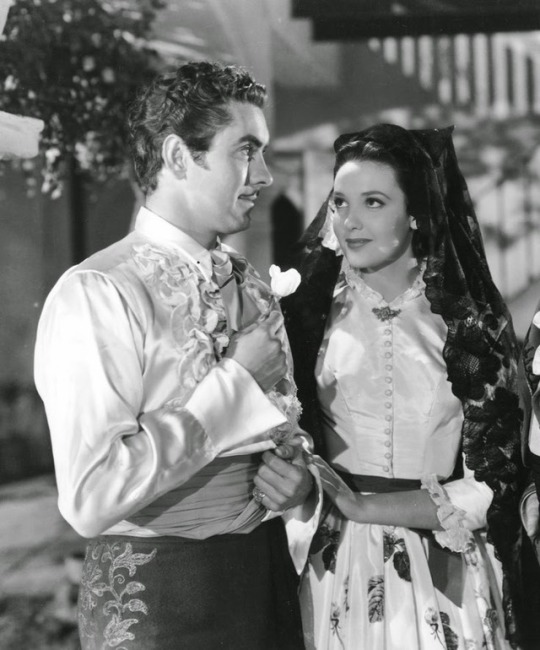
Tyrone Power romances Linda Darnell in The Mark of Zorro (1940), with a screenplay credited to John Taintor Foote, and adaptation by Garrett Fort and Bess Meredyth. John was born in Leadville, Colorado and had 13 writing credits, from a 1919 adaptation of one of his plays, through a 1974 posthumous tv movie adaptation of his screenplay for The Mark of Zorro. He was also the original author of Hitchcock's Notorious.
Garrett was born in New York City and had 64 screenwriting credits, from a 1917 short, through the 1974 Mark of Zorro adaptation. His other entries among the best 1,001 are Applause, Frankenstein, and The Lost Patrol. Garrett was also credited with the "play script" for Dracula with Bela Lugosi.
Bess was born in Buffalo, New York and had 157 writing credits in her career that included Oscar nominations for A Woman of Affairs and Wonder of Women in 1928 and 1929. Her career spanned 1910 to 1947 and was mostly in the silent era. She was an uncredited contributor to John Ford's Drums Along the Mohawk, also among the best 1,001 films.
1 note
·
View note
Photo
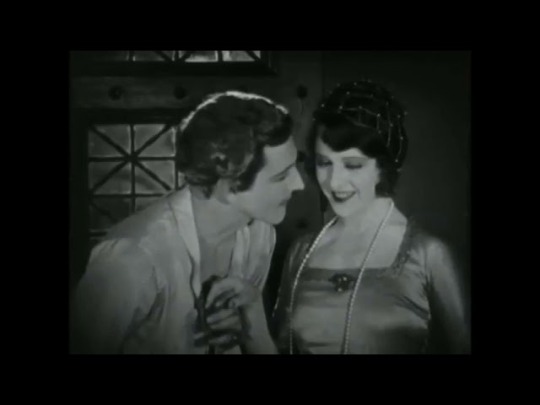
From The “When Women Wrote Hollywood Archives 05: Clip from Don Juan (1926) Written by Bess Meredyth
Don Juan is a 1926 American romantic Adventure film directed by Alan Crosland. It is the first feature-length film to utilize the Vitaphone sound-on-disc sound system with a synchronized musical score and sound effects, though it has no spoken dialogue.[4] The film is inspired by Lord Byron‘s 1821 epic poem of the same name. The screenplay was written by Bess Meredyth with intertitles by Maude Fulton and Walter Anthony.[5]@McFarlandCoPub @stephenscollege @MFAscreenwriter
#products#redbubble#shopping#clothing#technology#iphone#samsung#ipad#laptop#sleeve#cover#case#art#print#tote#drawstring#bag#mug#pillow#clock#card#sticker#notebook#journal#wallet#gift
0 notes
Photo
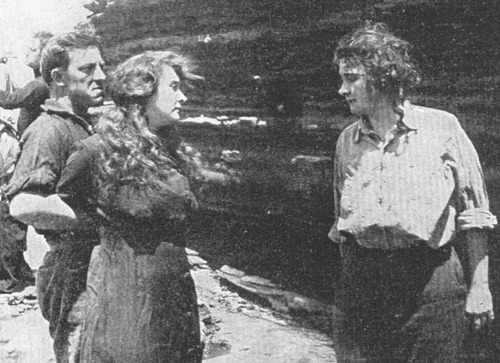
http://www.lonchaney.org/filmography/27a.html
THE TREY O' HEARTS
Released 8/4/14 by Universal/Gold Seal;Director: Wilfred Lucas, Henry McRae; Screenplay: Allan Dwan, from a story by Louis Joseph Vance (some sources credit Bess Meredyth with the screenplay); 15-chapter serial (31 reel)
CAST: Cleo Madison (Rose/Judith), George Larkin (The Hero), Edward Sloman (The Father), Roy Hanford (The Villain), Tom Walsh, Lon Chaney (unbilled?)
Chapter 1: Flower of the Flame
Chapter 2: White Water
Chapter 3: The Sea Venture
Chapter 4: Dead Reckoning
Chapter 5: The Sunset Tide
Chapter 6: The Crack o' Doom
Chapter 7: Stalemate
Chapter 8: The Mock Rose
Chapter 9: As the Crow Flies
Chapter 10: Steel Ribbons
Chapter 11: The Painted Hills
Chapter 12: Mirage
Chapter 13: The Jaws of Death
Chapter 14: The First Law
Chapter 15: The Last Trump
SYNOPSIS: Judith is an evil young woman, while her twin sister Rose is good.. Rose is in love with the Hero, but Judith and her father are constant plotting his destruction because the Father hated the Hero's father for years, and has now redirected his hatred at the son. Many attempts are made to kill the Hero, and he escapes each time. Eventually both Judith and Rose fall in love with him, and at the end Judith reforms. At the wedding of Rose and the Hero, a lightning bolt strikes the Chapel and Rose is killed. While the Hero is unconscious, Judith takes Rose's place. She nurses him back to health and cares for him for the rest of his life.
NOTES: This was a 15-chapter serial from Universal with a 3-reel first chapter and the remainder running 2 reels each. Thanks to artist Robert Semler for providing this photo which looks very much like Chaney. For a lengthy serial it may not have been unusual for other Universal stars to be pulled in for brief shots, and Chaney could have been grabbed for a few short scenes.
"The staging, backgrounds and photography included are excellent. There is villainy personified in the vindictive old paralytic, and many of the characters stand out clearly...Most spectators will probably count it worth while seeing this first installment." -Moving Picture World
© 2013 Jon C. Mirsalis
0 notes
Text
13 luglio … ricordiamo …
13 luglio … ricordiamo … #semprevivineiricordi #nomidaricordare #personaggiimportanti #perfettamentechic
2020: Domiziano Arcangeli, attore, modello e produttore cinematografico italiano naturalizzato statunitense. Domiziano fu scoperto dal fotografo Helmut Newton a Venezia nel 1979, e dopo alcuni servizi fotografici con lo stesso Newton divenne un fotomodello richiesto internazionalmente. Arcangeli lavorò in teatro in Italia, in America e in Russia per poi partecipare a numerosissimi film italiani…
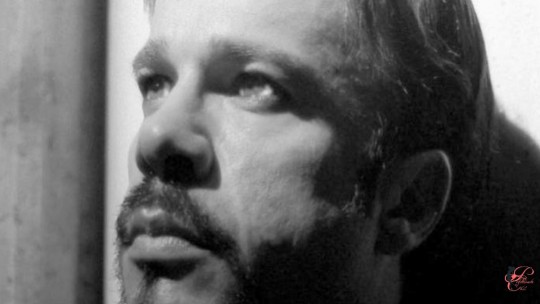
View On WordPress
#13 luglio#13 luglio morti#Alla Nazimova#Bess Meredyth#Beverly Roberts#Big Jimmy#Claudio Cassinelli#Corinne Griffith#Cory Allan Michael Monteith#Cory Monteith#Domiziano Arcangeli#Enzo Maggio#Franco Pastorino#Frida Kahlo#Girolamo Di Stolfo#Helen Elizabeth MacGlashen#Jessie Millward#John Alexander#John Bryant#Lois Darlington Dowlin#Lois Moran#Magdalena Carmen Frida Kahlo y Calderón#Marem-Ides Adelaida Jacovlevna Leventon#nata Corinne Mae Griffith#Pina Renzi#Red Buttons#Richard Carter#Ruggero Cara#Sage Moonblood Stallone#Sage Stallone
0 notes